It's always been a delicate balance when it comes to humans and water. H2O makes up a majority of our biological structure, feeds us, quenches our thirst, keeps us clean and -- in some instances, as listed below -- can rip us to small, bloody pieces. Alright, maybe not quite literally, but things in the water definitely can. With the upcoming film Sanctum, in which several cave divers get trapped in a flooding cavern, Player Affinity wishes to take pause and think of the various films where water serves as a key theme/setting/scare factor for people that can't swim...landlubbers.
10. Deep Blue Sea
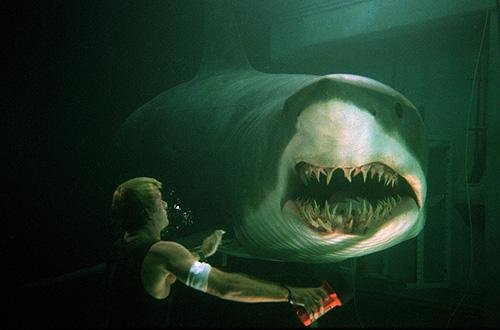
Those damn sharks! They can swim backwards and interrupt Samuel L. Jackson when he’s making speeches (if the Oscars were like that, I bet viewership would go through the roof). Perhaps the presence of water goes without saying, but much like another “little” film on this list, it serves as a consistent reminder to the audience on a few matters: sharks live in that blue sea and they’re smarter, faster and stronger in it than humans are. It’s wet, campy, bloody and it’s just a good time.
9. Pirates of the Caribbean: The Curse of the Black Pearl

Whatever your thoughts on the franchise as a whole (and its inability to ... just ... die ...) you cannot deny that the first time around with Curse of the Black Pearl was a great outing. Big and bold while never taking itself seriously (thank God), Pearl made no mistake of what it had: Johnny Depp, a bevy of pirates and some well-designed ships for a film set almost entirely at sea. Much like the other films on this list, a great respect is paid to the water, as if it were a separate character (it’s part of the pirate mythos after all). Even the most hard-boiled of the pirates hold a slight fear of the sea. Still, Pearl struck a chord in balancing the dangers(?) and fun of sea life at the same time while paving the way for one of the more memorable performances in pop culture. Cheers to that.
8. U-571
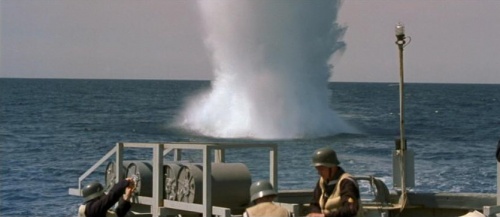
Taking place almost entirely on a German submarine at the height of WWII, the American crew onboard must survive the torpedoes and depth charges of German U-boats intent on destroying the captured sub. In this film, the creature in the water isn’t a shark or a rogue wave, but humans. Like any other film on this list may show, human beings in large bodies of water are often defenseless on their own. The setting of the ocean in U-571 works to show humans killing one another in an environment where none of them have any real defense. The instances where the crew must sit silent listening to depth charges being dropped on them serves as a prime example of this.
7. The Poseidon Adventure (1972)
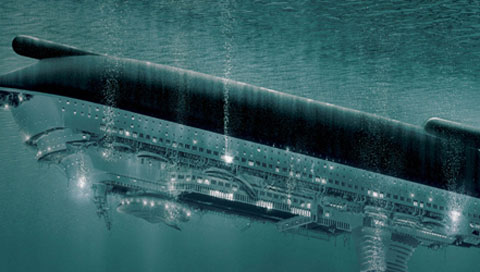
Here’s an idea! Let’s put a massive, retiring ship with luxury style interior in troubled waters for a final run through. What could possible go wrong? Clearly, the administrators responsible for press on the fictional S.S. Poseidon never heard of the Titanic. Unlike many other films with water as a central theme, what sets The Poseidon Adventure apart is not what is living in the water but the water itself. It doesn’t represent anything other than death for any of the protagonists that cannot escape it. In the end, it ultimately wins out by taking the titular ship and several of its main protagonists, and despite an escape made by other characters, the ocean is never truly defeated in this classic '70s disaster flick. Bad-ass.
6. Dark Water (2002 Japanese Version)
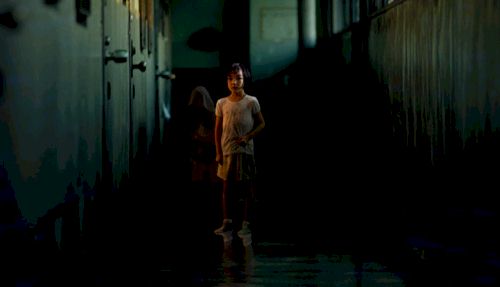
Who says a film needs to take place at sea or on a river for water to be freaking creepy? 2002’s Japanese film Dark Water (subject to a lesser American remake in 2005) put water front and center as a harbinger of doom in the apartment of a newly single mother and her young daughter. Taking a leak in the ceiling to a new extreme, the water would come to represent the emotions felt when a child experiences severe loss (so many stories are the parent experiencing loss) and how far they may go to reclaim what they lost. The water is disgusting and out of place in an apartment corridor or a school hallway, like a stalker on dry land. It’s dark (duh), unsettling and effective in making us think twice before turning on the shower.
5. Finding Nemo
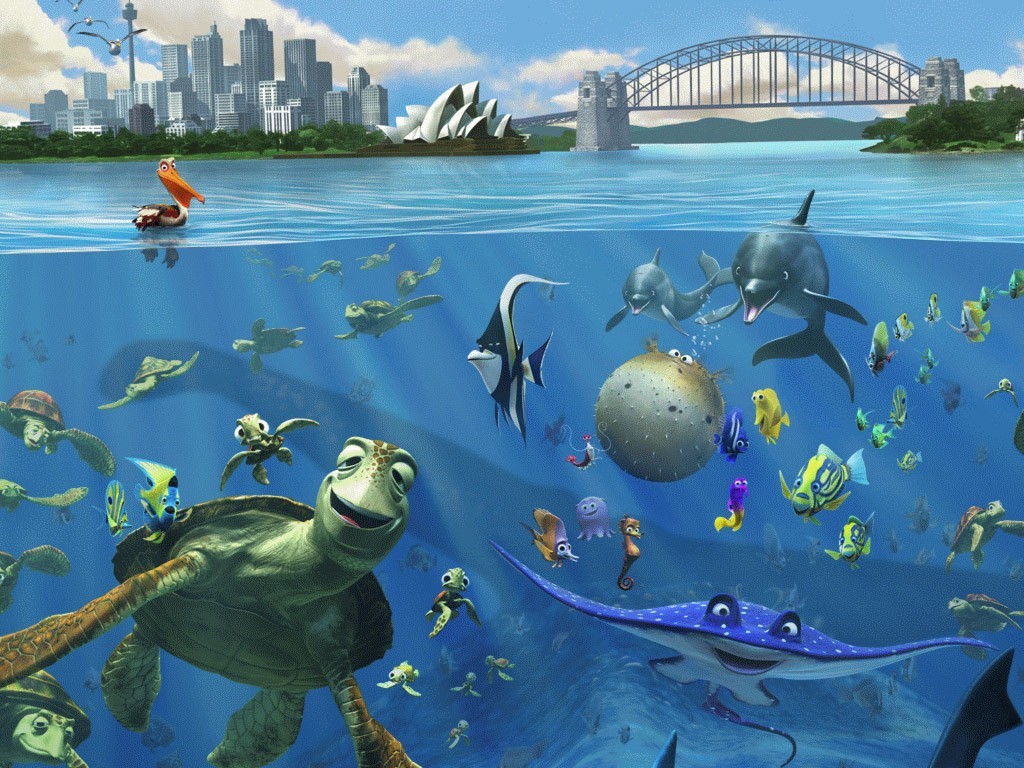
It goes without saying that the ocean is a big part of what makes Finding Nemo work. Often times, water in film plays a key role in horror and disaster (just look at this list!). With Pixar, we get the ocean in a far more colorful and playful way. Even the sharks are doing their best to be nice, being a support group and all. No doubt the various fish involved will inspire a new generation of kids to become oceanographers, who will no doubt be saddened to discover fish cannot speak English. I felt the same way when I learned that in real life, a Brachiosaurus might trample me (thanks for nothing The Land Before Time). Still, in a reversal from a film such as Jaws, Finding Nemo implies the ocean is safe/home and land is not to be fully trusted; a seagull might get you….“Mine! Mine! Mine!”
4. Jaws
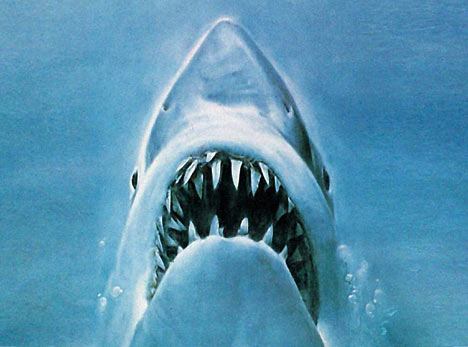
If you meet someone who thinks Deep Blue Sea is an original, do mankind a favor and smack them with a white glove. Jaws was there first, building much of the marketing campaign on how people would be afraid to go back into the water after seeing it. Since the titular shark remains unseen for most of the film, the ocean serves as a historical backdrop for the town and catalyst to the film’s conflict. Like the shark, it’s massive, unpredictable and when stacked up against it (without the help of that dynamite), human beings don’t stand a chance. The ocean of Jaws not only housed and powered the shark but prodded the viewer that a massive shark may not be the only larger than life creature living down there.
3. Whale Rider
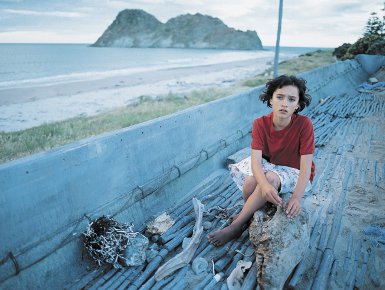
Whereas other films on this list may have water serving as a warning to humans (be good to your Earth or it will drown you!), Whale Rider serves to showcase the connection, history and personal relationships that human beings hold with the sea. The story focuses on a young girl named Pai (Keisha Castle-Hughes) who is meant to become the first female chief of her tribe, one that has a long history with the whales surrounding their island. The film does not have underwater science stations nor does it have bloody encounters with any crazed whales. Rather, Whale Rider utilizes creatures from both land and sea to set a theme of unity, family and tradition inherent in many cultures around the world where the sea is considered to be a part of the community. This is a film that accentuates what the ocean can give us and what we can give in return.
2. Apocalypse Now
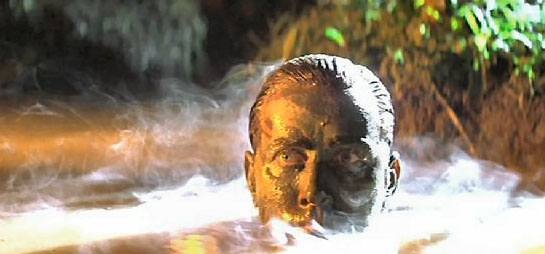
When Martin Sheen rises out of the river to kill Marlon Brando’s Col. Kurtz, you know he is ready to kill. In Francis Ford Coppola’s river odyssey, the river is almost a character itself, leading Sheen (almost delicately) into the next deadly/maddening scenario. Whatever or whomever doesn’t survive is taken by the water. In the end, whether or not Sheen has been cleansed of his obsession or engulfed by the madness of the jungle is up for debate. What cannot be argued is how the river of Apocalypse Now represents a void in an individual’s core, where one cannot be entirely certain what will come out of it.
1. The Abyss
Say what you will about James Cameron (and I’ve said plenty), the man knows his water. The 1989 sci-fi classic illustrates this probably better than any of his other bigger films (yes that includes Titanic). Set aboard an underwater drilling facility that begins encountering water-based intelligent life, the water of The Abyss is both crushing (literally and mentally) yet oddly comforting, especially as the new species reveals itself more. In an alternate ending for the film, the species display control over the ocean, setting up massive rogue waves across the world’s coastal landmarks (much better ending), turning the ocean into one of its more weaponized forms on screen. It’s daunting and makes fantastic use of water as a symbol on screen. Ultimately, The Abyss earns the top spot because it balances both the message of symbosis with the ocean (logical without being too heavy-handed) and the fantasy-based possibilities that such a relationship could lead to. In terms of reality and fiction, you get a healthy balance of both with The Abyss.